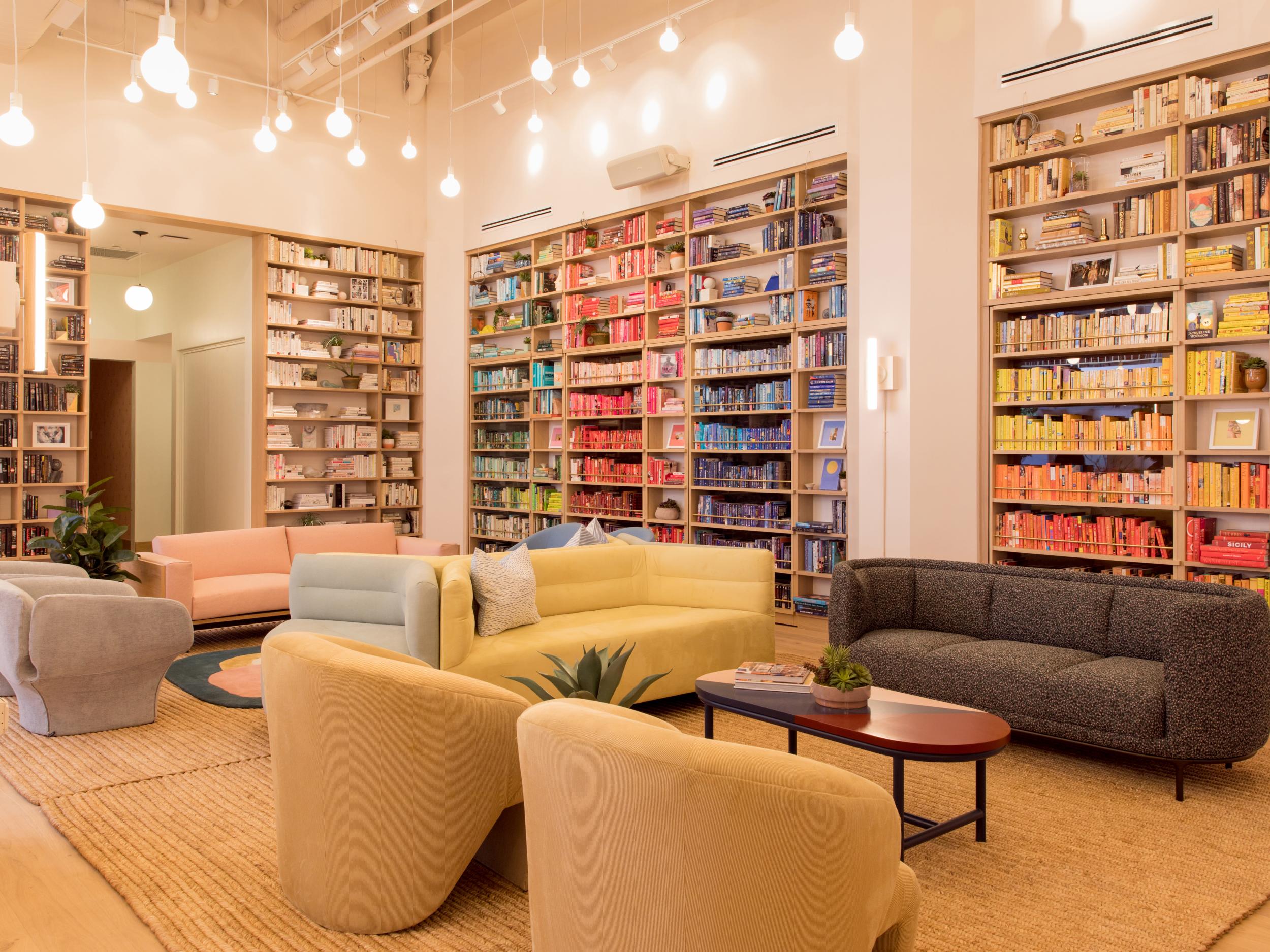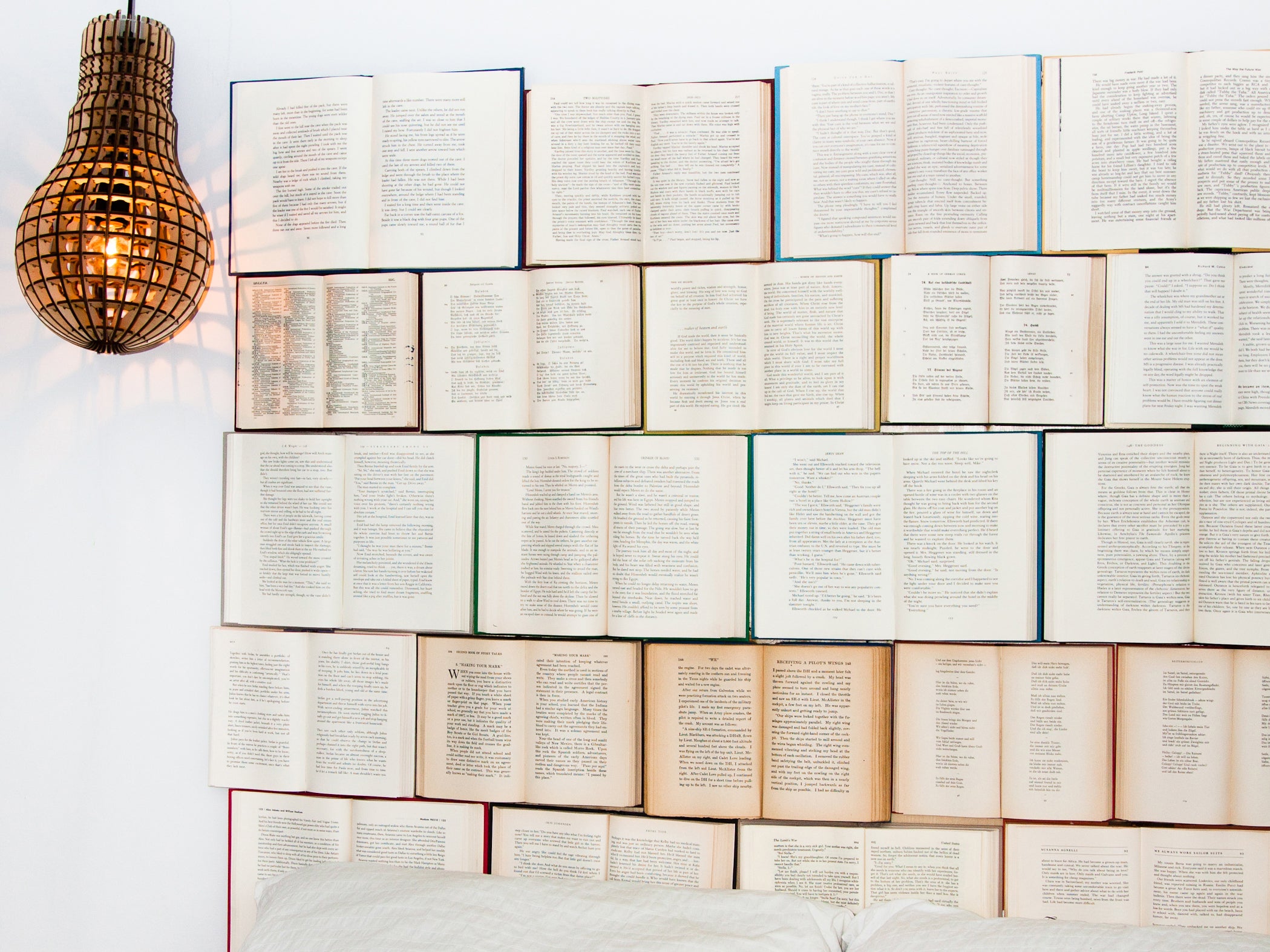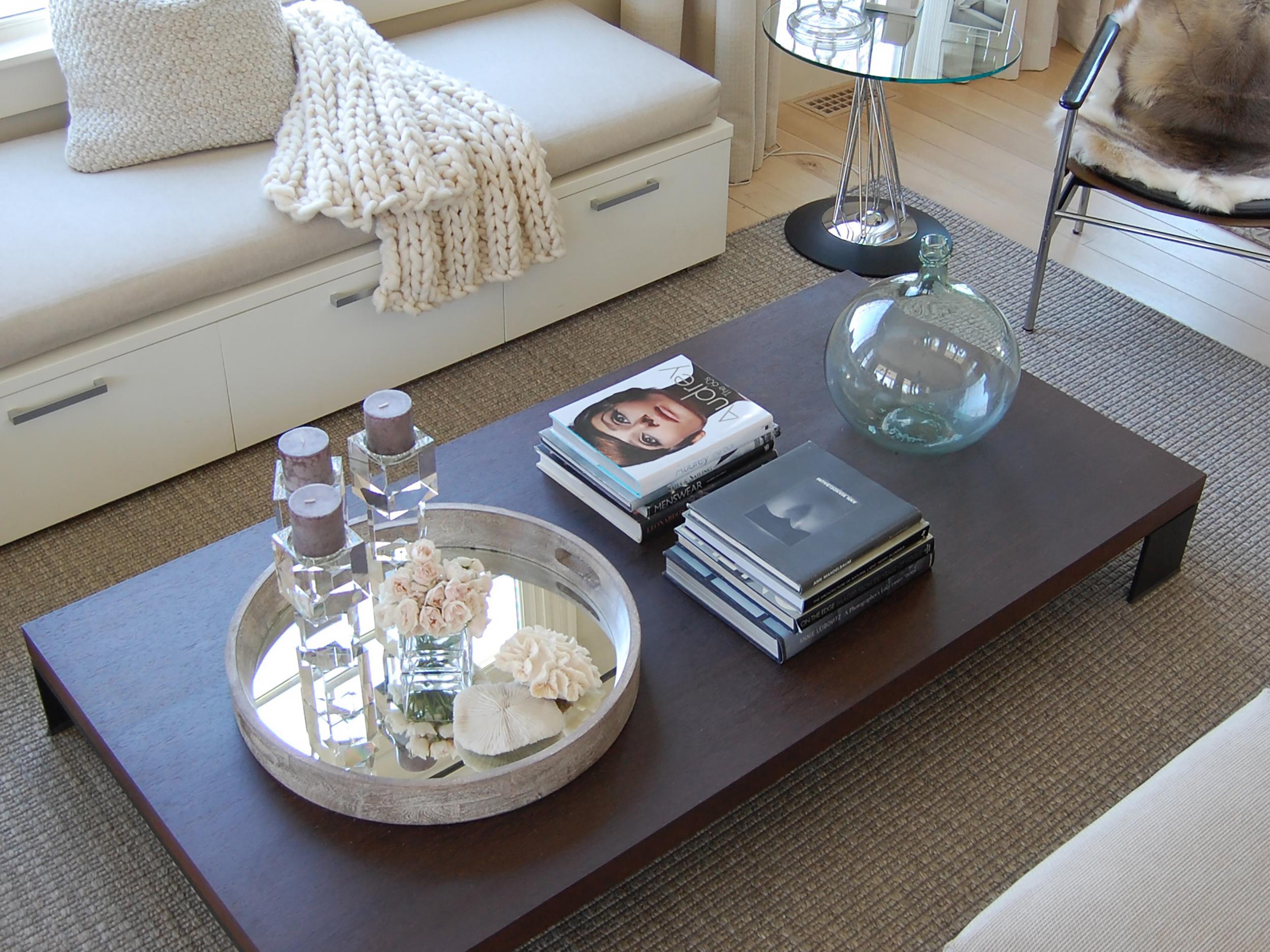Five creative ways to decorate your home with books
From stylish headboards to carefully colour-coordinated shelves – using books to decorate is the latest DIY design staple in the interior world

Your support helps us to tell the story
From reproductive rights to climate change to Big Tech, The Independent is on the ground when the story is developing. Whether it's investigating the financials of Elon Musk's pro-Trump PAC or producing our latest documentary, 'The A Word', which shines a light on the American women fighting for reproductive rights, we know how important it is to parse out the facts from the messaging.
At such a critical moment in US history, we need reporters on the ground. Your donation allows us to keep sending journalists to speak to both sides of the story.
The Independent is trusted by Americans across the entire political spectrum. And unlike many other quality news outlets, we choose not to lock Americans out of our reporting and analysis with paywalls. We believe quality journalism should be available to everyone, paid for by those who can afford it.
Your support makes all the difference.It used to be that your books says something about you.
Today, that may not always be the case. Books are evolving as a decorating statement for their looks, not for their content.
Some people adore having favourite books on shelves throughout their homes as totems of their literary life or their studies. But today, like it or not, many books are bought by the box, by the yard or by colour.
Sometimes a book is only bought for its cover, or even its spine or page-top hue. Books can add warmth and colour to a room, and stacks of books can serve as end tables or nightstands.
Even in New York’s prestigious 2018 Kips Bay Decorator Show House, shelves of books encased in identical white Brodart jackets served as a backdrop for an otherwise colourful living room by Los Angeles designer David Netto.
“It looks mysterious and abstract,” says Netto, who procured the wrapped books from private library curator Kinsey Marable.
Instagram and Pinterest continue to inspire DIYers with fresh ideas on decorating with books. We present a few here.
If you do a search for #BookArch on Instagram, you’ll see a charming variety of arcs in homes, book shops and libraries. They look good framing fireplaces or rounded doorways or creating interest along a wall.

Julie James, a floral artist and wedding designer in the Pittsburgh area, says book arches are in demand for weddings and are especially popular with English majors and teachers.
For a photoshoot, James bought a used book arch made of two lengthy pieces of bendable steel (rebar). A variety of hardbacks and paperbacks had two holes drilled in them and were threaded onto the arches, which were then secured into heavy bases.
James says books turn up in many roles at nuptials. “I’ve hung book pages from trees and laid out book pages under flowers and moss on tables,” she says. A popular centrepiece: little stacks of vintage books with a candle or small vase of flowers on top.
A popular online tutorial these days is how to make a stylish headboard out of books. In 2012, Kassandra Utzinger, a Vancouver graphic designer and blogger, wrote a post on her website, Design Every Day (designeveryday.ca), about her bed.
She had arrived in Canada from Australia and needed a fast, affordable design idea for her new apartment. “I was looking for some way to decorate in a personalised way,” Utzinger says. “I was inspired by seeing how Banana Republic was using books to display jewellery in their stores back then.”
She explored secondhand shops to collect books and nailed them onto plywood, leaving the top pages loose. She affixed those with two-sided tape and finessed them to make it look like the pages are about to flip
Haters posted negative comments on the blog post about damaging books. “They said: ‘Why would you stick nails in books?’ But in reality, the books I found otherwise would not see the light of day.”
Utzinger’s blog has been reposted several times, and she has been delighted to see other versions of her idea. “It’s cool to see how people put up the books and then do some painting over the pages,” she says.
“I have seen various-size headboards using different-size books. In children’s rooms, sometimes they use colourful and bright picture books. It’s all really fun.”
Everything at the Wing, a chain of women-only coworking spaces and social clubs, is carefully coordinated: even the bookshelves.

According to Chiara de Rege, an interior designer with offices in New York and Los Angeles, who decorates the clubs, books by female authors were carefully curated for club members to check out.
One of the co-founders of the club, Audrey Gelman, was interested in creating a rainbow of colour on the shelves.
“Audrey had been talking about a spectrum of colour,” De Rege says. “She is a total book nerd, and it was important to her that there be a library with relevant books that people would read, but that it also have a cool rainbow vibe.”
They organised books on shelves in the Wing-branded Pantone colours, which are pale pink, mint, navy, burnt orange, caramel and grey.
Some books are displayed with their covers out, and some with covers off and spines out. All the books and authors they wanted to include, from Danielle Steele to Hillary Clinton, found a home in the rainbow, De Rege says.
Organising books by colour continues to be a very popular look in design magazines, on Pinterest and on Instagram, despite a lot of naysayers. It’s an inexpensive and striking way to add interest to a boring bookshelf. Online sellers are happy to sell you a foot of lime green or lipstick red.
There’s another way to organise books by colour: by the hue of their tinted page tops. The most popular page-top colours are blue and green, says Nancy Martin, owner of Decades of Vintage, which sells old books curated by colour, as well as rare antique books.
Publisher’s stain, the technical term for tinted page tops, was applied to the page edges of certain vintage books to shield pages from later damage because of dust and dirt. “It was a cheap way to make things look fancier,” Martin says, “and gave a series of books a competitive edge.”
She says shelving books with the page tops showing out is popular for nurseries and children’s rooms, since 1950s book series such as the Bobbsey Twins, Nancy Drew and Tom Swift have tinted tops.

“Sometimes people put a few with the spines out and then put a few flat in the other direction,” Martin says.
The oversize, photography-heavy books stacked on many a coffee table have their own category in the publishing and decorating business: “coffee-table books”.
These books often say something about the residents of a home. These books may be used to make a political statement or give clues to where the owners might have travelled.
Cape Cod designer Sandra Cavallo changes out the books on the coffee table in her shingle-style home in West Falmouth to reflect the seasons. If she has an overnight guest, she might gear the books to their interests.
She places books in stacks and carefully arranges collections around them, giving the books space to be easily accessed. “Grouping books by colour and size helps my layout to appear clean and simple,” says Cavallo, “but mixing vibrant, fun colours and different sizes can be a great design statement.”
She might use a round or square tray on the table to group smaller elements in different heights and materials. Play around with your vignettes, she says, and step back and take a look.
If you’re not sure of the overall effect, take a quick picture. “That’s how I got started on Instagram,” says Cavallo, who now has more than 173,000 followers on her account, @oldsilvershed.
© The Washington Post
Join our commenting forum
Join thought-provoking conversations, follow other Independent readers and see their replies
Comments